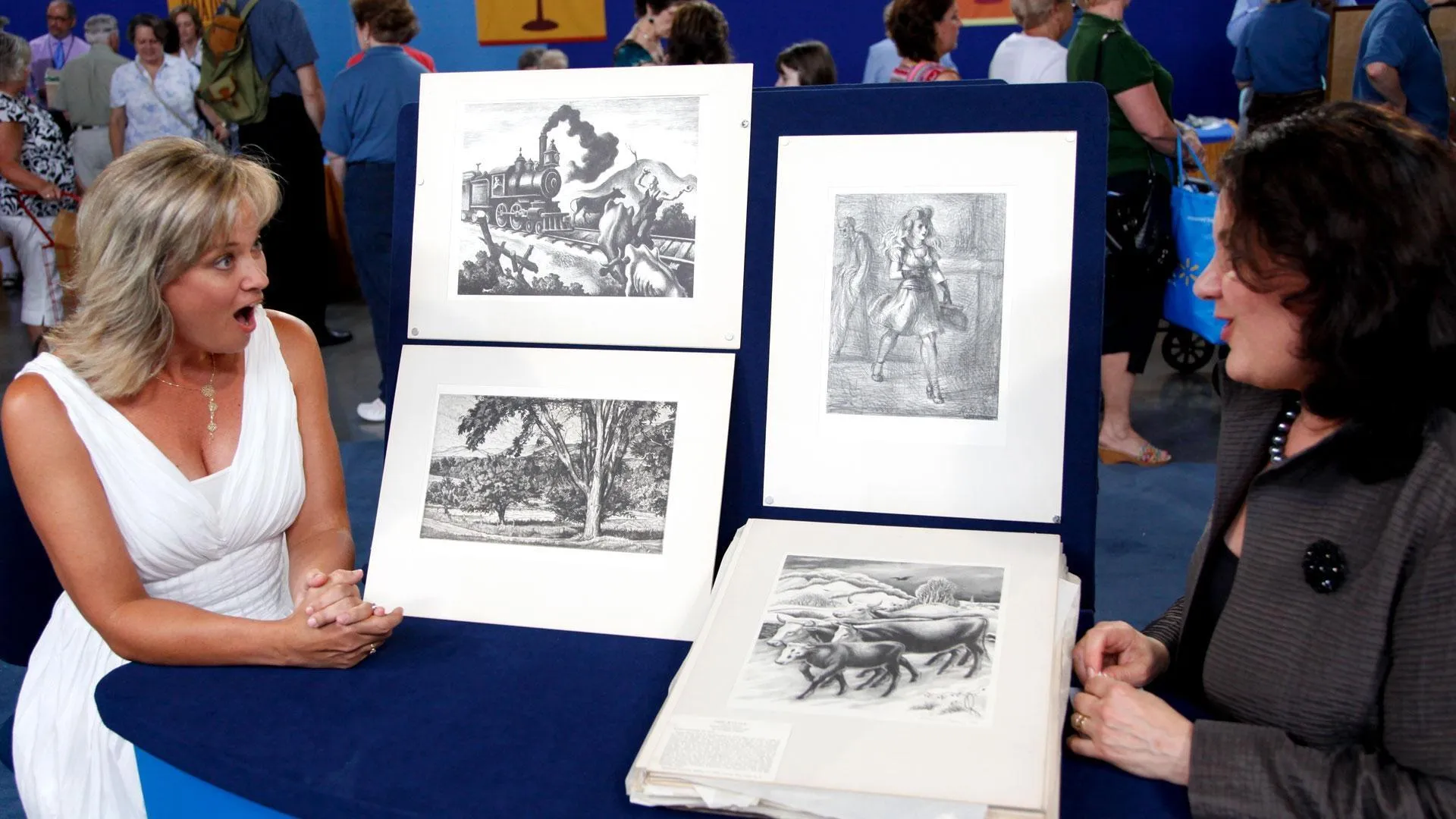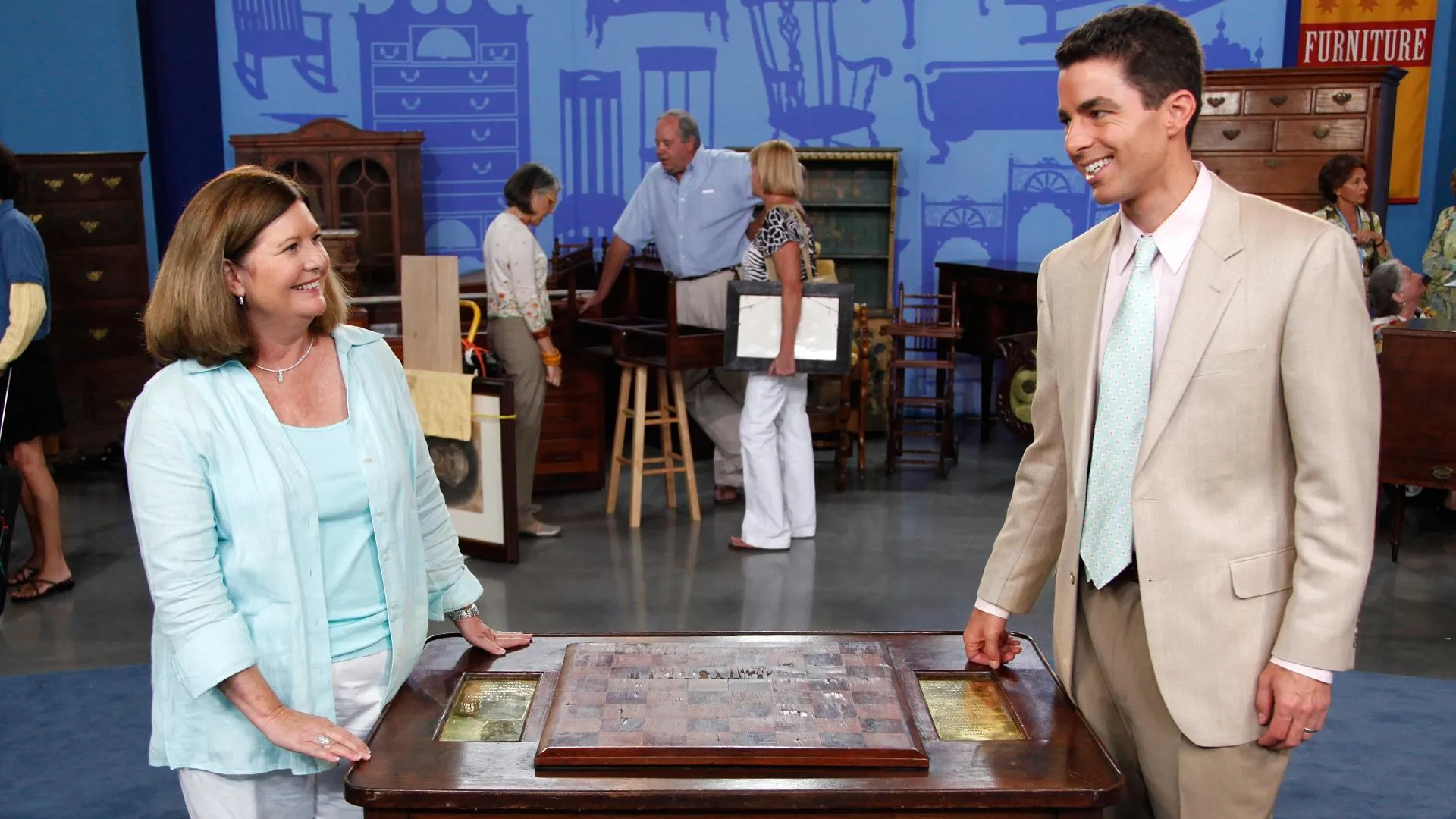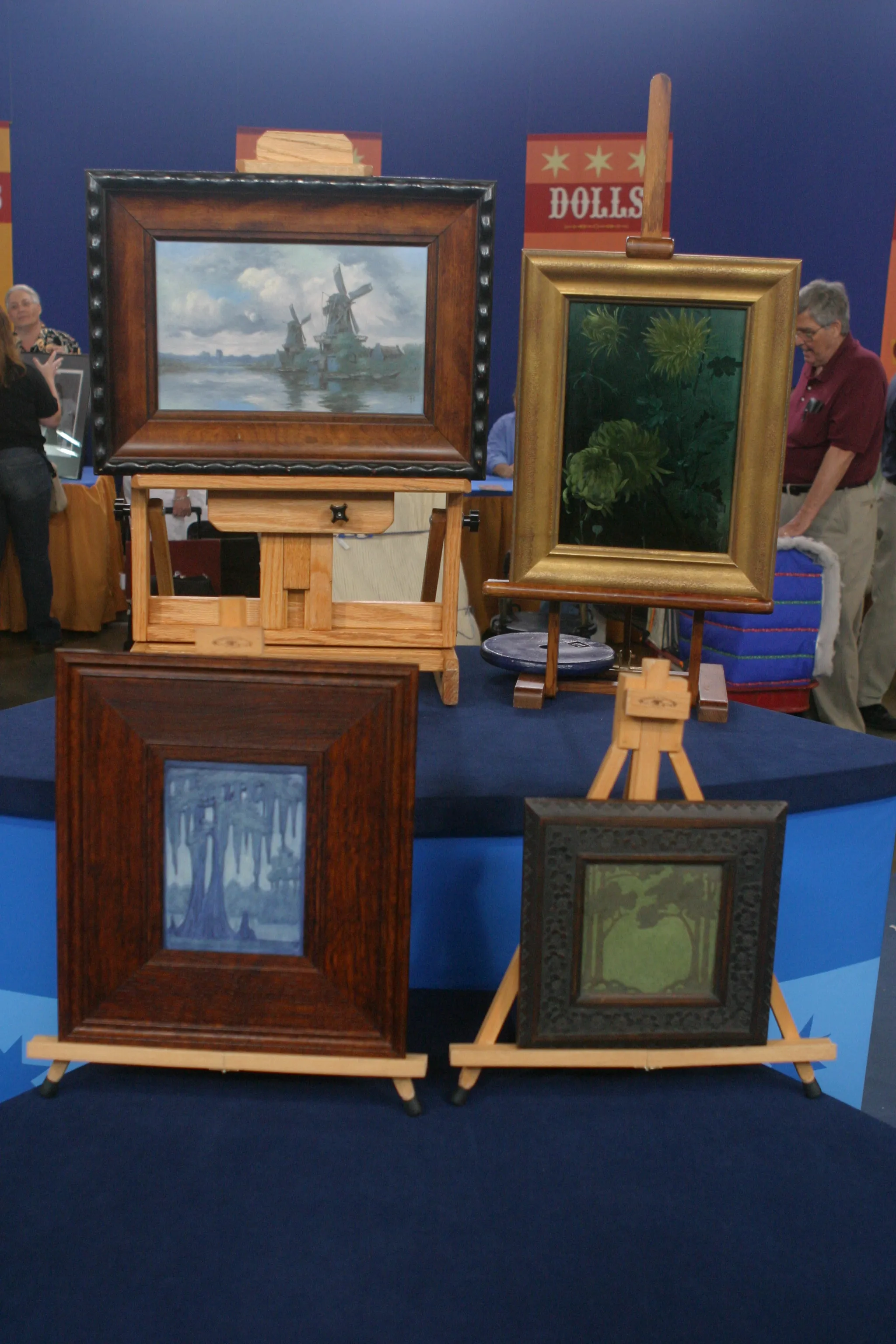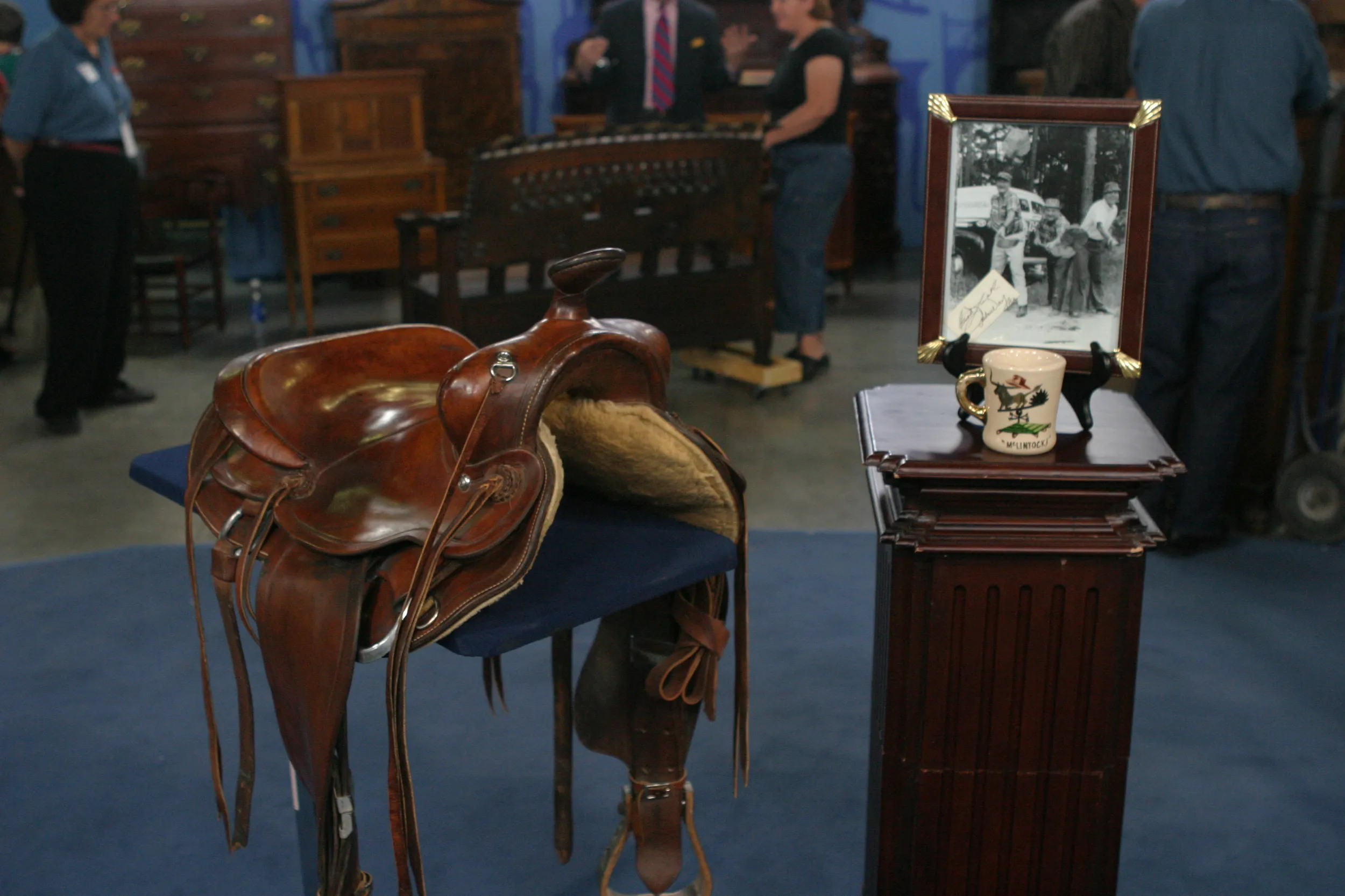GUEST: I've got some portraits that are gold leaf on the back of glass. And they're 18th, early 19th century. They've come down in the family. They've been given to me by my father-in-law. And we know who two of them are, but we're not quite sure who the third one is.
APPRAISER: Okay.
GUEST: They were in a house that was 90% destroyed by Ivan, but they were in the attic, and the attic actually stood while most of the walls were torn down by the hurricane and the flood. And they actually survived the storm.
APPRAISER: So we can say these have survived a long time and a lot of peril.
GUEST: Yeah.
APPRAISER: When you look at the artist's name here, it says, "C.P. Polk." It's Charles Peale Polk. Now, the Peale family is the royal family of American portrait painting in the 18th and 19th century. And a lot of their children were artists, they were entrepreneurs and inventors. Now, Charles Peale Polk made his living doing portraits of Washington that he sold to interested people who were Washington fans. Now, the provenance came through, you had said, the Bowie family. Okay, and so now this is where it begins to layer, which is really interesting. We have C.P. Polk, we have the Bowie family, Prince George County in Maryland, a huge family, important people in Maryland, and then an obscure reference that talks about the inventiveness of Charles Peale Polk doing their Èglomisé portraits and scratching through the gold leaf. Now, verre Èglomisé is really just decoration on the reverse of glass, so it can be either painted or it can be done in gold leaf. But this is a really interesting technique. Gold leaf is laid on the surface of the glass, and then Polk went in with a very fine stylus and scratched away that gold and made essentially almost a negative. And then after that, you go in and you paint the background black. So now the black shows through where the gold has been scratched away, so it gives the whole portrait depth. And that's a very innovative technique. They're all encased in these nice ebonized early 19th-century frames.
GUEST: So the frames are original.
APPRAISER: The frames appear to be original. Now, you had said you'd been looking for these sorts of things for a while.
GUEST: Nothing.
APPRAISER: Nothing. Nowhere did I find a gilt verre Èglomisé portrait of anybody. We have the Peale name, we have the Bowie name, we have the reference from the National Gallery to his verre Èglomisé gilt technique, and we have ourselves set up for one word: unpredictable. We depend a lot on precedent. We know what things have sold for, so we have something to point to. But with this, we don't have that. Now, I looked at the top two. At auction, I think they're worth around $10,000 to $15,000 for the pair. We identified the sitters, the sitters are period, early 19th century, we know where they're from. Now, the guy on the bottom not only has the indignity of not knowing who he is, but also the fact that he's cracked. So while it can be restored, it will only ever really be about a quarter of the value of the other two. So that one I think would be worth around $2,500. So I am absolutely thrilled you brought these in today, because I think they're a really interesting story.












